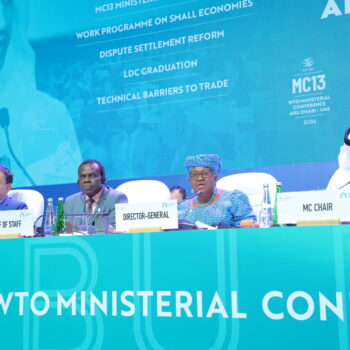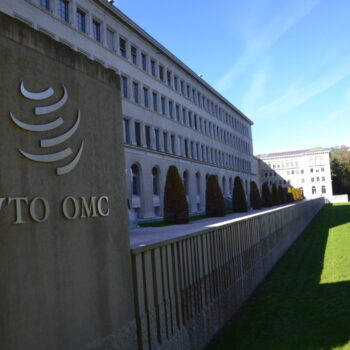As European leaders prepare to meet on Friday to discuss the EU’s climate and energy policies up to 2030, political manoeuvring is casting uncertainty over both the content and timing of decisions on the 2030 package. Better recognition of the risks of inaction is needed to motivate urgent and ambitious leadership at Heads’ level.
In January, the European Commission released proposals for the headline elements of the 2030 package. These included a 40% domestic greenhouse gas (GHG) reduction target and an EU-level objective to increase the share of renewables to at least 27% of the EU energy mix by 2030. Despite the language that this was an ‘ambitious’ package, the proposals are close to business-as-usual projections, and don’t yet provide a clear route to Europe’s ultimate goal of 80-95% reductions in GHGs by 2050.
In the short time since, member states have been considering their positions and rapidly trying to strike deals that can provide a way forward. But the recent Council meetings of energy and environment ministers showed substantial political divergence both on the timing and the content of an agreement on the 2030 framework. While ministers from the Green Growth Group countries pushed for agreement in March on the Commission’s proposals but with the GHG target open to upward negotiation, the Visegrad group led by Poland pushed back on any decision before the end of the year.
Presidential leadership?
Last week’s leaked draft of the Council conclusions showed how Council President Herman Van Rompuy is trying to lower expectations. He proposed that this Council meeting should only agree the orientations and process for going forward, with decisions on the actual elements of the package delayed until late 2014. This is playing into the hands of the blockers who have vested interests in delaying EU climate ambition. It also shows a worrying lack of understanding in both Brussels and the Member States about the risks of such a delay to 2030 timeframe.
Why does it matter?
As highlighted in a statement by 13 energy and environment ministers earlier this month, ‘A delay risks undermining commercial sector confidence, deferring critical energy investments, increasing the cost of capital for these investments, and undermining momentum towards a global climate deal.’
The EU is still regarded as setting the global benchmark on climate ambition. However, China and the US are working proactively to shape the 2015 climate agreement, announcing recently that they will start collaborating on their offers in October. If unchallenged by a strong EU domestic offer of an ambitious GHG goal in September at the UN Secretary General’s high level conference, Europe will lose much of its leverage on the shape and ambition of the global deal. US-China discussions would consign Europe to the margins, and likely lead to a lowest common denominator result. This would serve neither Europe’s interests nor that of its allies, the vulnerable countries, where exceeding 2 degrees of warming would undo the valuable steps forward on poverty eradication from the past decades.
Friday’s Council meeting is the key landing point for agreeing a timely EU offer to present to the international community. The next Council meeting in June, already has a crowded agenda dominated by high-level political appointments. A failure to push forward now would increase the likelihood of a decision being delayed until autumn 2014 – missing out on opportunities for EU influence on the global stage.
What do EU leaders need to agree by summer 2014?
Europe’s leaders need to urgently agree a domestic target of at least 40% GHG reductions, and establish a clear process for reviewing ambition upwards ahead of the Paris 2015 climate negotiations. To ensure a coherent and credible policy package, leaders should also call for more detailed proposals from the Commission on energy efficiency, infrastructure and the mechanism for expanding renewable energy. This would increase the level of emissions reductions achievable by the policy package, drawing on recent analysis of the additional GHG savings made possible by binding targets on energy efficiency and renewables.
Who needs to step up?
Over recent weeks France and Germany have failed to make the case for a decision before September. This seems to be part of their strategy of engaging Poland, but puts at risk the EU’s ability to shape a proactive diplomatic strategy on climate change.
The UK is now the strongest advocate to keep the process on track. This week, David Cameron must stand firm on the UK position of a 50% GHG target and encourage other progressive countries to group around a climate target of ‘at least 40%’ to avoid locking in low ambition across the package. This winter’s floods prompted Cameron to publicly recognise the significant risks climate change poses to communities and businesses in the UK. He now has the opportunity to drive forward EU action to tackle the root cause of the floods – simultaneously responding to the risks of reduced diplomatic leverage and ‘low carbon leakage’ of green jobs and investment in Europe.
With the Ukraine crisis provoking fears of a ‘new cold war’, the EU’s decisions on climate and energy policy has wider implications. Not only will Europe have to address renewed risks to energy security, it must also demonstrate how it can effectively respond to regional challenges and global threats. In his final six months as Council President, Van Rompuy needs a greater stake in the urgency of agreement on the 2030 framework to maintain Europe’s leadership in tackling climate change. He must wake up to the political risks of inaction and work with the Member States to safeguard the 2 degree commitment – and the interests of Europe’s citizens, business and international allies.


